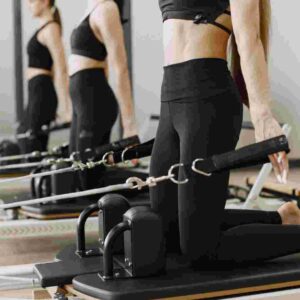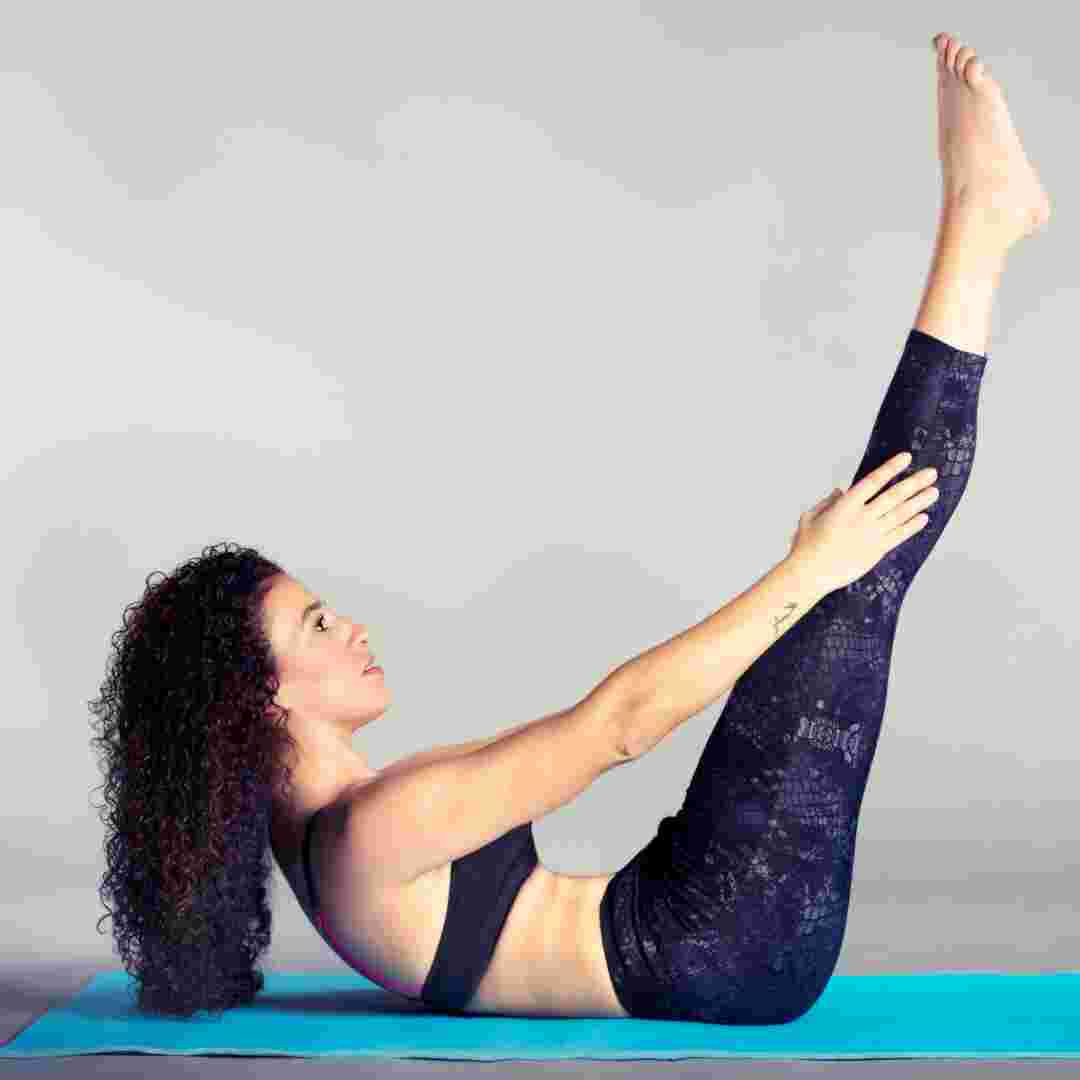Table of Contents
Introduction
Homemade Pilates Reformer Machine: DIY Guide
Homemade Pilates Reformer Machine: 10 Steps
DIY Pilates Reformer Machine: Tips and Tricks
Q&A
Conclusion
"Build Your Own Pilates Reformer for Strength"
Introduction
Wood, aluminium, and springs are needed to create a Pilates reformer. The machine has a frame, carriage, footbar, and springs. The carriage is wood with wheels that glide over the frame, which is constructed of wood and metal. The carriage footbar is used for footwork workouts. The springs on the frame and carriage offer exercise resistance. The machine can be customised to your needs.
Homemade Pilates Reformer Machine: DIY Guide
Pilates is a popular exercise that strengthens core muscles, improves flexibility, and aligns the body. A reformer is an effective way to do Pilates. Many people make their own reformer machines because they are pricey. Make a Pilates reformer machine with this step-by-step guide.
Gathering supplies is the first stage in making a Pilates reformer. A wooden frame, springs, ropes, pulleys, sliding carriage, and footbar are needed. Hardware stores and online retailers sell these supplies. Make sure the materials you purchase are high-quality and can withstand your weight and pressure.
The wooden frame must be assembled after gathering all the materials. The frame should sustain your weight. Build the frame with plywood or hardwood. Cut the wood to size and shape, then screw and nail the pieces together. Level and stabilise the frame.
Install the springs after building the frame. The reformer machine relies on springs for resistance and tension. Select spring strengths based on your fitness level. Metal brackets and screws secure the springs to the frame. Align and space the springs equally.
The ropes and pulleys are installed next. The ropes and pulleys move the sliding carriage along the frame. Fasten the pulleys to the frame with metal brackets and screws. Rope the pulleys and secure them to the sliding carriage. Ensure the ropes are taut.
The sliding carriage is where you'll lie or sit during activities. It should travel smoothly along the frame. You can buy or create a sliding carriage with plywood and foam padding. Metal clamps and hooks secure the sliding carriage to the ropes. Make that the sliding carriage slides smoothly along the frame without jerking or sticking.
Reformer machines end with the footbar. It anchors your feet during exercises. You can buy or create a footbar using metal pipes and brackets. Attach the footbar to the frame with screws and bolts. Be sure the footbar is properly secured and does not move.
Testing the machine is the final step after assembly. Sit or lie on the sliding carriage and do some simple exercises to test the equipment. Adjust springs and ropes to optimum resistance and tension.
Finally, creating a Pilates reformer machine is enjoyable and satisfying. You may customise the machine to your needs and fitness level. Before using, make sure the machine is safe and strong. Following this article's steps and seeking professional guidance may be necessary. Your Pilates reformer can be yours in no time with patience and work.
Homemade Pilates Reformer Machine: 10 Steps
Pilates is a popular exercise that strengthens core muscles, improves flexibility, and aligns the body. A reformer is an effective way to do Pilates. These machines are pricey, so not everyone can afford one. Make your own Pilates reformer machine for a cheaper choice. Create a Pilates reformer machine with these ten steps.
First, gather materials
Gathering materials is the first stage in creating a Pilates reformer. A wooden board, springs, carriage, footbar, headrest, and ropes are needed. Hardware stores and online retailers sell these supplies.
Step 2: Cut Wooden Board
Next, cut the wooden board to size. The board should be long enough for the carriage and wide enough for exercises. Cut the board to size with a saw.
Step 3: Sand Board
To smooth the board, sand it after cutting. Remove splinters and rough edges with sandpaper. This makes the board pleasant.
Step 4: Springs Attach
Next, attach the springs to the board. Metal brackets can secure springs to the board. Securely attach and space the springs.
Step 5: Install Carriage
The carriage is the spring-moving platform. Pre-made or homemade carriages are available. Rope or chain the carriage to the springs.
Install the Footbar
The footbar provides exercise resistance. Ropes or chains can secure the footbar to the carriage. Secure the footbar and make sure it can handle user weight.
Step 7: Install Headrest
The headrest supports the head and neck during exercise. Attach the headrest to the board using screws or bolts. Make sure the headrest is secure and comfortable.
Add ropes in step 8.
The ropes give exercise resistance. Ropes can be attached to the carriage with metal brackets. Put ropes equally spaced and securely fastened.
Step 9: Test Machine
Test the machine after finishing all the processes. Check the machine's operation with some simple workouts. Make any necessary adjustments before working out on the machine.
Step 10: Enjoy Your DIY Pilates Reformer
Congratulations! Your Pilates reformer machine is complete. Pilates is now available at home. Maintain safe machine use and appropriate technique during exercises.
Finally, creating a Pilates reformer machine at home saves money and provides the benefits of Pilates. Follow these ten steps to build a safe, effective, and pleasant machine. Homemade Pilates reformer machines can be created quickly with a little effort and imagination.
DIY Pilates Reformer Machine: Tips and Tricks
Pilates is a popular exercise that strengthens core muscles, improves flexibility, and aligns the body. A reformer is an effective way to do Pilates. Pilates reformer machines have a sliding carriage, springs, ropes, and pulleys. It provides a full-body workout with a variety of movements that target different muscle groups.
Pilates enthusiasts who want to build their own reformer equipment should examine many factors. You require basic woodworking abilities and the right tools and materials. Second, you must comprehend Pilates reformer design and operation. Here are some tips for building a Pilates reformer machine from scratch.
Gathering supplies is the first stage in making a Pilates reformer. A wooden frame, sliding carriage, springs, ropes, pulleys, and footbars are needed. Hardware stores and online retailers sell these supplies. Choose robust, high-quality materials that can bear your weight and strain.
After gathering the materials, assemble the wooden frame. The structure should be strong enough to hold the sliding carriage and springs. Use pine or oak wood for the frame and saw the pieces to size. Sand wood edges and corners to avoid splinters.
Next, build the sliding carriage. The carriage should be a wooden platform with four sliding wheels on the frame. Screws or bolts can secure the wheels to the platform. To ensure smoothness, examine the carriage's sliding motion.
After building the sliding carriage, add springs, ropes, and pulleys. Metal clips or hooks should secure the springs to the frame and carriage. Ropes should be threaded through pulleys and attached to carriage and footbars. The frame should have metal brackets or hinges for the footbars.
After assembling the Pilates reformer, evaluate its functionality. Pilates leg circles and chest lifts while lying on the carriage. Check the ropes, pulleys, and spring resistance.
Finally, making a Pilates reformer from scratch takes woodworking expertise and the right tools. With effort and dedication, you can build a high-quality machine for a full-body workout. Be sure to use high-quality materials, follow Pilates reformer machine design and functionality, and test the machine before using it. You may enjoy Pilates at home with these tips and tactics.

Q&A
1. What materials do pilates reformer machines require?
– Pilates reformer machines require plywood, metal springs, ropes, pulleys, carriage, footbar, and headrest.
2. Is a pilates reformer machine DIY?
A pilates reformer machine can be created at home with the correct materials and tools. To ensure safety and efficacy, expert supervision is advised.
3. What are key aspects to consider while building a Pilates reformer machine? When building a pilates reformer machine, size, quality, longevity, and safety elements like stability and weight capacity are vital.
Conclusion
Conclusion: Materials, size, and design are needed to construct a Pilates reformer. The machine should be robust, pleasant, and customizable for different body types and routines. It should glide smoothly and quietly with resistance settings for varying difficulty levels. Safety features and maintenance should also be considered to prolong machine life and effectiveness.


